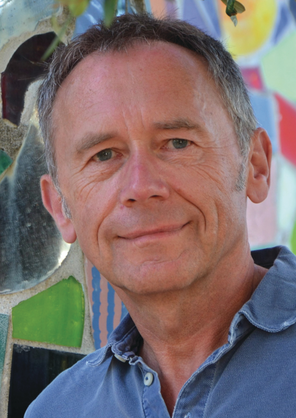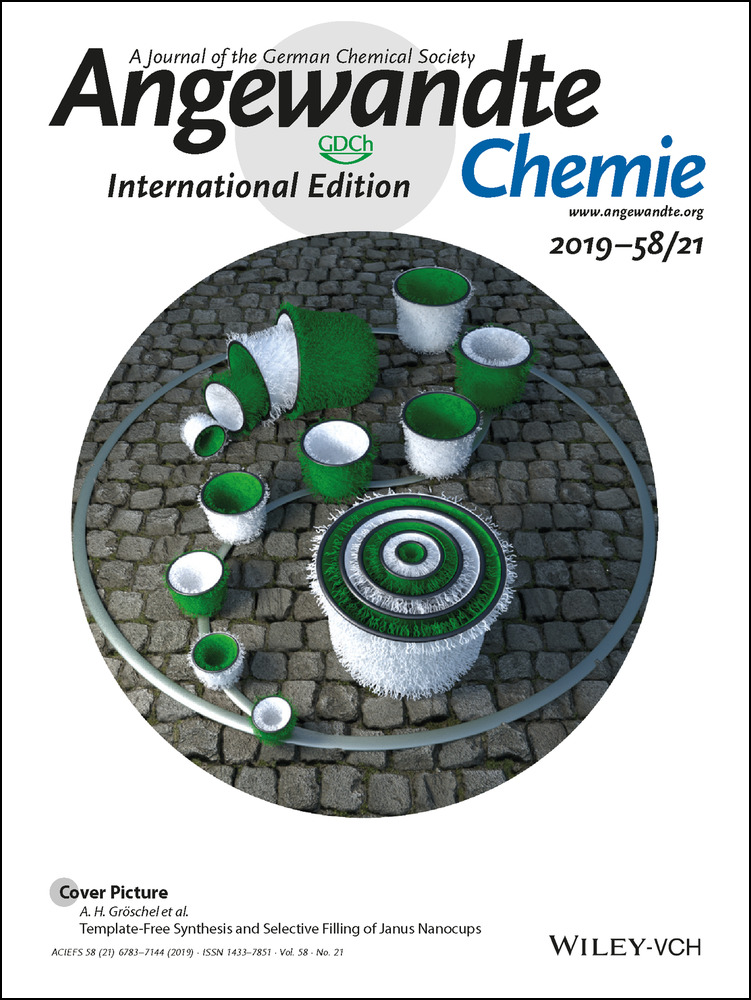Wolfgang Schnick
Graphical Abstract
Wolfgang Schnick
Wolfgang Schnick is on the Editorial Board of Angewandte Chemie and received the 2018 Liebig Memorial Medal from the Gesellschaft Deutscher Chemiker (GDCh; German Chemical Society). He has published more than 20 articles since 2000 in Angewandte Chemie, including:
“Cationic Pb2 Dumbbells Stabilized in the Highly Covalent Lead Nitridosilicate Pb2Si5N8”: P. Bielec, R. Nelson, R. P. Stoffel, L. Eisenburger, D. Günther, A.-K. Henss, J. P. Wright, O. Oeckler, R. Dronskowski, W. Schnick, Angew. Chem. Int. Ed. 2018, https://doi.org/10.1002/anie.201812457; Angew. Chem. 2018, https://doi.org/10.1002/ange.201812457.
-
Date of birth:
-
November 23, 1957
-
Position:
-
Professor for Inorganic Solid-State Chemistry (Chair), Ludwig-Maximilians-Universität München
-
E-mail:
-
-
Homepage:
-
www.cup.uni-muenchen.de/ac/schnick
-
ORCID:
-
0000-0003-4571-8035
-
Education:
-
1983 Diploma in chemistry, University of Hannover
1986 Dr. rer. nat. (doctorate) in inorganic chemistry, supervised by Martin Jansen,
University of Hannover
1987–1988 Postdoctoral researcher with Albrecht Rabenau, Max-Planck Institute for
Solid-State Research, Stuttgart
1992 Habilitation in inorganic chemistry, mentor: Martin Jansen, University of Bonn
-
Awards:
-
1992 Heisenberg Stipendium (German Research Foundation, DFG); 1992 Dozentenstipendium, Chemical Industry Fund (FCI); 1992 Chemistry Award, Göttingen Academy of Sciences; 1994 Otto Klung Award, Freie Universität Berlin FU; 1996 Gottfried Wilhelm Leibniz Award, DFG; 2002 elected Fellow of the Berlin-Brandenburg Academy of Sciences and Humanities; 2006 Horst Dietrich Hardt Award, University of Saarland; 2007 Wilhelm Klemm Award (Gesellschaft Deutscher Chemiker; GDCh; German Chemical Society); 2009 elected Fellow of the German National Academy of Sciences Leopoldina; 2018 Liebig Memorial Medal, GDCh
-
Current research interests:
-
Syntheses of novel nitrides and oxonitrides of main-group elements and transition metals, as well as their properties and applications as optical functional materials or semiconductors
-
Hobbies:
-
Traveling, sports, playing the guitar, meditating
My best investment was to save up money for my first guitar at the age of 13.
If I were not a scientist, I would miss something very essential in my life.
If I won the lottery it wouldn't change much in my luck.
When I'm frustrated, I do sports or make music.
The most important thing I learned from my parents is sincerity.
My favorite place on earth is at the “Osterseen” south of Munich.
I chose chemistry as a career because at the age of ten I was boundlessly fascinated when my older brother brought sulfur home from school and said “this is a chemical—it is made up of atoms!”
My most exciting discovery to date has been the suggestive power of words.
My worst nightmare would be losing my optimism.
My biggest motivation is supported by my confidence to change things and to be involved in shaping the future.
I lose track of time when I'm having a good conversation, playing my guitar, or working undisturbed and without time pressure.
Guaranteed to make me laugh is my wife's humor.
The best advice I have ever been given is learning to enjoy the moment and to be happy in it.
I am specifically attracted by authenticity.
My favorite author (fiction) is Frank Goosen.
My top three films of all time are Toni Erdmann, Lost in Translation, Tenacious D.
My favorite song is Goin' Ahead from Pat Metheny's album 80/81.
My favorite saying is “the highest form of bliss is living with a certain degree of folly”.
My favorite piece of research is extremely narrow-band red-light-emitting Eu2+-doped luminescent materials crystallizing in variants of the UCr4C4 structure type (see Nat. Mater. 2014, 13, 891). This publication turned out to be particularly trendsetting for a systematic search targeting narrow-band luminescent materials.
What does winning this award from the GDCh mean to you and your research?
The Liebig Memorial Medal is the oldest scientific prize from the GDCh. Famous scientists from all areas of chemistry have been honored with this distinction. Among the previous laureates are my scientific great-grandfather Wilhelm Klemm, the predecessor of my chair here at the LMU Armin Weiß, as well as many other esteemed chemists. From 1852 until his death, Justus Liebig was professor at the University of Munich. Without any doubt, he was one of the most influential and trendsetting scientists in the early days of modern chemistry. This is also documented by the huge number of scholars that can be traced back to Liebig. By structure elucidation of carbon nitride type precursor compounds melam, melem, and melon, that were named by Justus Liebig in the 1830s, we were able to directly follow up his research. In our Department of Chemistry at the LMU, Justus Liebig is omnipresent as our greatest lecture hall bears his name.
What do you think the future holds for your field of research?
In most cases, the synthesis of nitrides is much more difficult and challenging compared to oxides. However, recent achievements in high-pressure synthesis (diamond anvil cells, multianvil technique, hot-isostatic presses, ammonothermal method) could overcome decisive synthetic limitations. This development has allowed a plethora of unexplored novel nitride compounds to become accessible. From classical structural ceramics of simple nitrides (e.g., Si3N4, sialones) the main focus now addresses functional materials that may find application as semiconductors, optical materials (e.g. luminescent or nonlinear optical materials for second harmonic generation) or ionic conductors. For industrial applications, crystal growth of innovative nitride materials will be fostered by the ammonothermal method.





